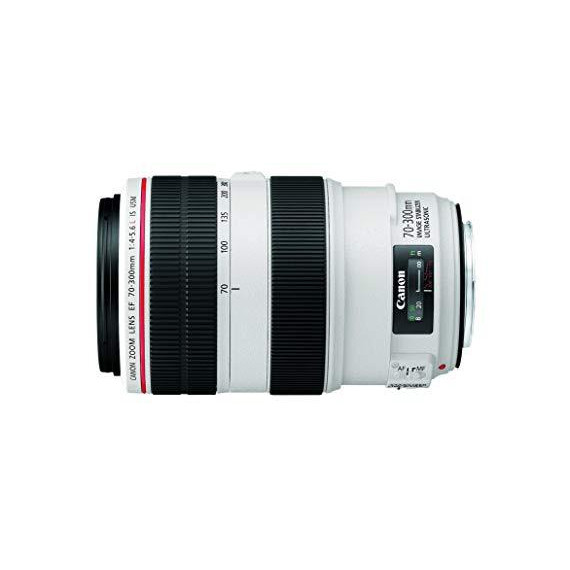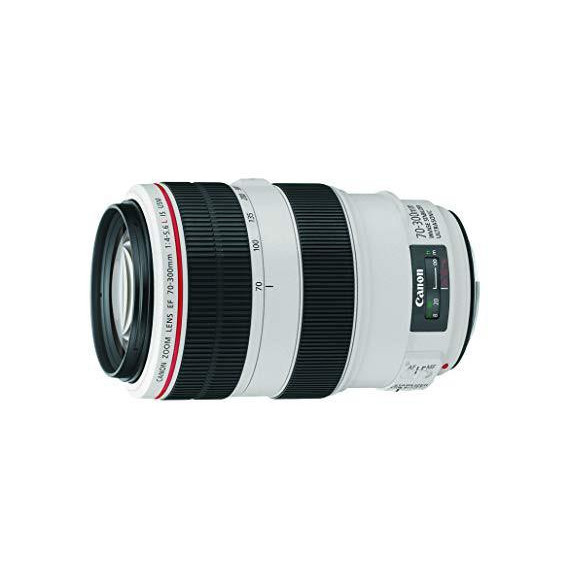Francolargo
Im a scientific imaging professional and I selected this lens for a travel kit along with an EOS 6D body and an EF 24-105mm 4/L IS USM lens. This lens is physically shorter than either of the L series 70-200mm telephoto zoom lenses and thus it is easier to pack. The whole rig - camera body and two lenses - fits a padded bag the size of a small lunch box. In some ways the compactness of this lens also makes it easier to manage on the camera as well. Balance on the 6D body is very good and handling feels very natural. High quality, solid mechanical design are obvious in every detail. The fact that it resists rain, dust, and other photographers enemies means it will be trustworthy under all reasonable conditions. Concerning handling, some reviews criticize the location of the zoom ring on this lens. I find that to be an empty criticism unless perhaps you are very set in your methods and very much in a hurry. Here is what I find using this lens: The focus ring is wide so it feels just as natural to hold either focus ring or the zoom ring (which is closer to the end glass). Holding the lens farther forward (the zoom ring) improves stability, and shot composition using the zoom is then easy to tweak. Meanwhile, the fast and very accurate ultrasonic focus motor does a great job in critical focusing. If focus isnt exactly correct you could move your hand to the focus ring and get it perfect. But doing that is typically slower than re-aiming the focus sensor and refocusing automatically before taking your shot. So think about how you approach fast-action shooting and decide for yourself whether the zoom ring needs to be in the same location for every lens. For me - I get more useful material thinking about composition, using autofocus, and taking extra shots. Optically, this lens is a gem. It is extremely crisp. Details are sharp and (with the 6D body) colors have beautiful, natural saturation. I couldnt believe the minimal lens flare when the sun is in the frame! These are sophisticated optics! Still, there are always compromises. In this lens, you get a wide zoom range (70-300) in a small overall package. What you give up is long-end maximum aperture - only f5.6. While that f5.6 is a bit of a downside, here is the nominal maximum aperture (reported by the EOS 6D body) vs. zoom range - you can decide for yourself whether the working apertures are adequate. f4.0 = 70-100mm, f4.5 = 100-160mm, f5.0 = 160-220mm, f5.6 = 220-300mm. In the shooting I have done so far, any kind of daylight and youre good. In dim conditions, you will be pushing ISO (and loosing detail) or needing a steady rest or tripod. FWIW, I find Im rarely zoomed out into the f5.6 range, plus the image stabilization has never given me a shaky image in daylight. At long reaches I get slightly sharper images when the lens aperture is stopped down at least to f8. In summary, color rendition, contrast and sharpness are the really strong points of this lens. The fact that it is relatively small and easily packed means it can be with me whenever needed. I can hardly wait to tote this little rig on a flight to some exotic spot where the beauty of nature and people is there for the taking. Update: I have now been halfway around the world with this kit (6D body and two zoom lenses), carrying it all day/every day. You do notice some weight but it is very manageable. The trade-off is there is no substitute for the L series lens quality and the results speak for themselves. Looking at the photos people comment that the places visited look incredible! That impression starts with the technical quality of the lenses and body. [Tip from experience: I find it useful to check the AF and IS switch settings each time the lens goes on the camera because they can accidentally change during handling plus it is easy to forget that you intentionally changed them.]










